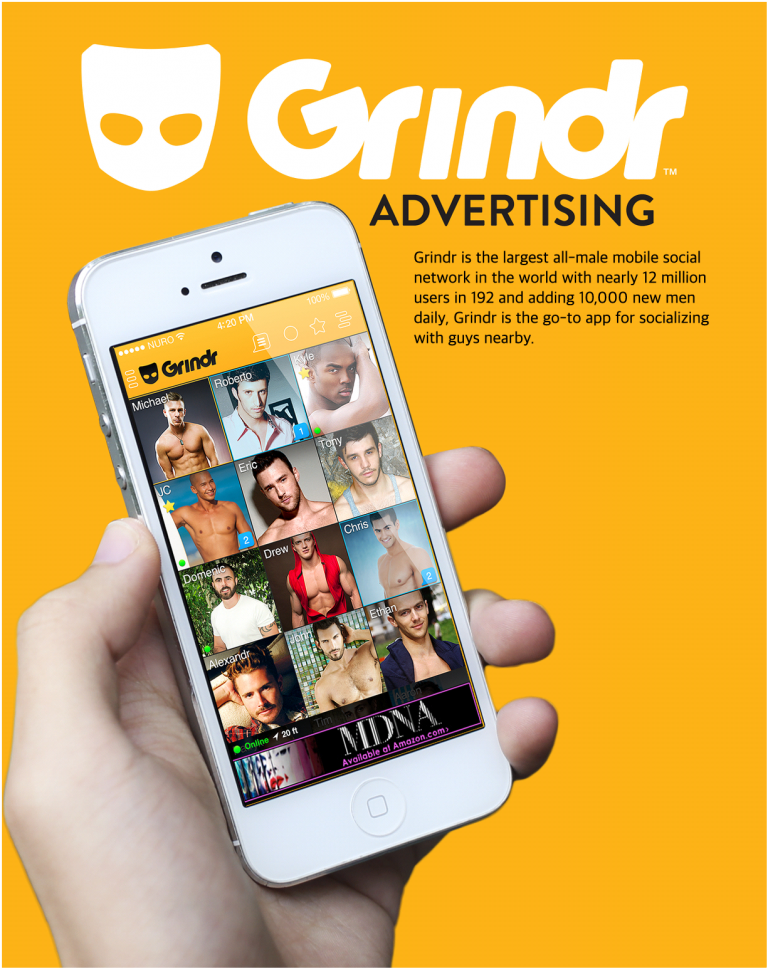Grinding out desire through media

I am interested in the ramifications of digital technology and online new media in social and personal constructions of gay identity. My research explores how gay men perform their identities in online domains, and studies the materials gay men create and share online to communicate and express themselves, including pictures, profiles, text messages and avatars.
A chapter of my dissertation focuses on the use of dating apps, Grindr especially, as technologically constructed sites of erotic engagement, and articulates how users negotiate and construct identities on these apps. This chapter considers the determinative roles of digital media in social attitudes and identities of homosexual men in Canada. The aim is to investigate how the interrogative nature of social media profiles allows users to engage with the identities they assemble and disseminate through the sharing and archiving of text and images. This research is informed by ethnographic discussions of gay sex in public spaces conducted prior to the advent of digital technology and especially ubiquitous mobile computing devices.((see Public Sex: Gay Space ed. William Leap, 1991; Tearoom Trade by Laud Humphreys, 1975; Gay Macho by Marty Levine, 1991))
Dating apps offer a heterogeneous mixture of people looking for a diverse set of interactions and experiences. This chapter considers the ways in which sexual identities are conditioned by economies of online networks—and, by extension, the technologies which sustain them. Decorporalized by technology and media, the gay self becomes fetishized in ways that seek to translate and remediate the aesthetics of presence. I analyze the creation of profiles (written and articulated according to the mutual coordination of homosocial and homosexual desire between participants) to explore the processes of identity construction and negotiation.
Contemporary studies of online sexual practice between men show a considerable range of behaviours: some men use chat functions of dating apps to arrange casual, and often anonymous, sexual encounters with other men; others use these apps to seek potential partners, while some use them simply to experience gay and homosexual culture. Studies also show a growing flexibility and fluidity of identities that emerge on these sites ((see Changing Gay Male Identities by Andrew Cooper, 2013; Gaydar Culture by Sharif Mowlabocus, 2010; and, Getting It On Online by John Edward Campbell, 2004))). My research considers how sexual identity is deployed on these networks to articulate the parameters of this gay aesthetic economy. It seeks to provide a contemporary analogue to the socio-historical constructions of gay identity and queer space conducted by social historians like Matt Houlbrook (Queer London), Seth Koven (Slumming: Social and Sexual Politics in Victorian London) and others (see for example the recent anthology British Queer History ed. Brian Lewis).
Towards the end of my chapter, I turn to explore the function of Grindr especially as a locative, mobile and social media platform within theories of gay body and identity construction and negotiation (see again Cooper, 2013, and Mowlabocus, 2010). I claim that communal interaction and engaged user participation on Grindr alters the discourse and performance of gay identity both online and off. Grindr’s interface has evolved over the years, its prescriptions altered, prescribing virtual representations and proscribing interactions. In its earliest incarnation, users could upload whatever profile picture they wished. Over the past few years, Grindr’s interface has developed away from the sexual towards the social, with increasing regulations against nudity and offensive content, the removal of a “penis size” field from profiles (and the associated filtering function) and the capacity for users to block offensive users and even request their banishment from the app. In short, the experience of homosocialization on Grindr operates in tandem with the medium’s configurations of homosociality, and expressions of gay desire and expression adapt to the affordances of the interface.
My aim in attending the advanced media archaeology program is to consider the materials generated and experienced in performing gay masculinity online, and to better understand their function as contributions towards an evolving material archive of gay culture. By considering Grindr as an archive of visual and linguistic objects informed by spatial, temporal, cultural and even technological axes of positioning, I aim to study the emergence of a virtual gay culture.